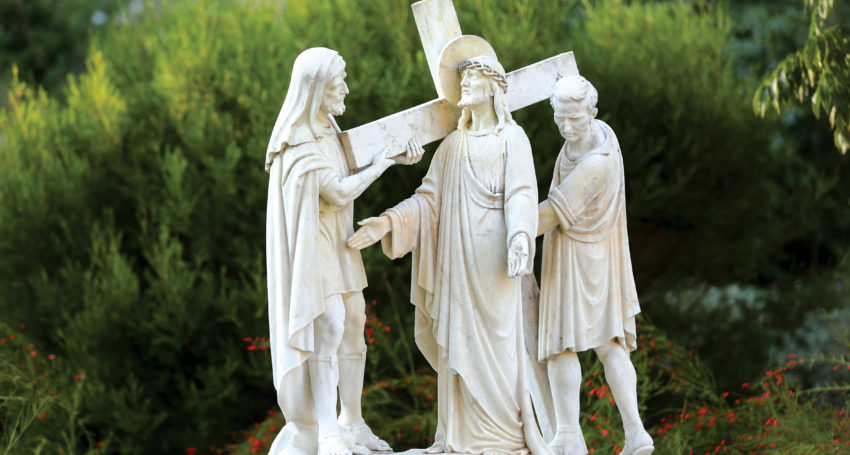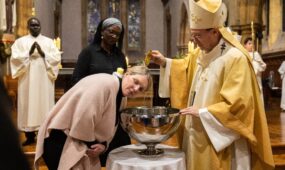Stations of the Cross
Opinion
Every year on Good Friday large numbers of Catholics gather in groups to remember the Passion of Christ by praying the Stations of the Cross.

In Adelaide many people attend The Monastery at Glen Osmond or Sacred Heart College, Somerton Park, where the Stations are held outdoors.
The concept of following the steps of our Lord to Calvary arose very early in the Church’s history. There is even a tradition claiming that Mary herself visited the various sites in Jerusalem connected with her Son’s passion.
There is written evidence that in the 4th century the most important sites were regularly visited by pilgrims, and as early as the 5th century St Petronius, the Bishop of Bologna in Italy, erected a complex of connected chapels in the Monastery of San Stefano representing these various sites in order to bring closer to home the shrines of Jerusalem.
Advertisement
We also have accounts from pilgrims to Jerusalem from the 12th, 13th and 14th centuries of a Via Sacra (‘Sacred Way’) in which they progressed from one shrine to another. Exactly what each shrine represented, however, is not clear.
The Franciscans took over custody of the holy places in Jerusalem in 1342 and they saw it as part of their mission to promote devotion to these places and to the Passion of Christ. Quite soon, some form or other of these ‘stations’ appeared in monasteries, friary chapels and churches wherever the Franciscans served throughout the world, and from there, the devotion to the ‘stations’ spread to other parish churches.
It was not until 1731, however, that the way of practising the Stations of the Cross was formalised by an official notice of Pope Clement XII.
In 1750 Benedict XIV became the first pope to lead the Stations of the Cross held at the Colosseum in Rome on Good Friday. With very few exceptions, his successors faithfully continued to lead the Stations every year until 1870, when the invasion of Rome compelled Pope Pius IX to suspend this custom. On Good Friday of 1964 Pope Paul VI restored the practice, and Popes John Paul II, Benedict XVI and Francis have continued the tradition.
All Catholic churches include some form of the Stations of the Cross, most often as paintings or sculptures of the 14 events beginning with Jesus’ condemnation to death by Pontius Pilate. While not all of the events of the Stations are recorded in the scriptures, they enable us to use our senses and imagination to reflect prayerfully upon Jesus’ suffering and death, or simply to experience the visual images as a means of reflecting on Christ’s great love for us.
We journey to Calvary with Jesus, watching as he falls under the weight of the cross even when he is assisted by Simon of Cyrene, moved as he meets his sorrowing mother or speaks to the women of Jerusalem or has his face wiped by the saintly Veronica. We are shocked as he is stripped of his garments and nailed to the cross and our hearts are heavy as he gives up his last breath before being taken down from the cross and laid in the tomb.
Advertisement
Praying the Stations does not have to be limited to Good Friday.
Traditionally, Catholics have contemplated the passion and death of Jesus every Friday, as well as right through the period of Lent. In 1991 Pope John Paul II presented an alternative set of Stations, based on what is contained in the scriptures. He included the Agony in the Garden, the betrayal by Judas, Peter’s denial of Jesus, the scourging of Jesus, the promise by Jesus that the good thief would be with him in paradise, and the words spoken by Jesus to his mother and to the beloved disciple.
Let us pray the Stations of the Cross with gratitude in our hearts and then rejoice with the Risen Lord on Easter morning.
Jenny O’Brien is manager of the Office for Worship.







Comments
Show comments Hide comments